



In today’s complex financial landscape, middle market and larger companies need a bank that understands their business and their industry. Key’s deep market expertise and relationship-led approach allow us to recognize opportunities and deliver strategic financial solutions that align with our clients’ goals.
Why Clients Choose Key
Over its 200-year history, Key has become one of the nation's largest bank-based financial service companies.

Capital and Lending Access
Flexible financing and
capital markets expertise
to power growth and investment.

Payments and Technology
Streamlined platforms and
real-time guidance to help
mitigate risk and manage liquidity.

Key Wealth Management
Trusted expertise, strategies
and insights to grow,
manage, and preserve wealth.
Our Services
Whether it’s access to capital, industry insights or guidance to drive growth, Key provides resources businesses rely on to compete in a changing economy. See how the strength of a top financial institution and hands-on service of a leading regional bank can help you take your business to the next level.
Empowering businesses that shape the future.
We’re proud to work with commercial clients, businesses and organizations whose innovative ideas and execution have a lasting impact on people’s lives.
Stephanice Washington: Being homeless, not knowing when you got to go, taking your income, spending the whole income up to have a room for a night or two or three. Then having to eat out. Wasn't able to cook and stuff. Having to eat out. You know, that was a lot. I lost everything. I lost everything but the clothes I had on my back.
Robert L. Likes: KeyBank has an unwavering, deep commitment to affordable housing. Our mission and our objectives are to be a national leader in affordable housing, to help the bank always achieve an outstanding CRA rating. To be a major contributor to our community benefits plan and to help our clients and communities thrive.
Erica Haize: We need more affordable housing in this community. So, people are struggling with that a lot. We saw the need of helping people be part of a great community.
Kevin Loos: NRP made an initiative into housing and health care, and so we've created a few projects across the nation, partnering with hospitals to provide housing and health care. You’re next to the healthcare community, next to primary care doctors, next to emergency room help, and really it becomes a more of a wraparound type of service, being right next to the campus.
Robert L. Likes: It's adjacent to a hospital to help with healthy initiatives. It also has community space within the Affordable Housing project that provides job counseling, financial literacy training, digital training, all for the betterment of the tenants and the surrounding community, to help really uplift lives.
Stephanice Washington: The day I got the phone call that I could come in and pick up my keys, was the best thing that ever happened for me.
Erica Haize: This was like a steppingstone for them. Some of them, like I said, were homeless. They start living here, their lives change. Their family can see that their life is changing. And to come in a building like this, and having something so nice and brand new for the first time, it's life changing.
Stephanice Washington: Before I came to Via Sana, my whole check went on my light, my gas, my rent. Since I've been at Via Sana, I'm able to save up, so I'm able to go to Walmart and buy me a month's worth of food from my income now.
Erica Haize: I hope we can partner more so we can keep making a change in the community.
Robert Likes: Affordable Housing changes lives. There are so many positive, healthy outcomes and economic upward mobility, when you have a permanent residence that is safe, decent, clean, affordable, that is your home.
Stephanice Washington: My new apartment is my serenity, my peace, and my home.
Recent Deals
Key brings extensive experience in closing deals across industries to help clients strengthen their market position and achieve greater success.

acquired
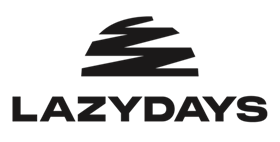
$232 Million
Exclusive Buy-Side Advisor
Summary
In late November 2025, KeyBanc Capital Markets (KBCM) successfully advised Campers Inn, Inc. (Campers Inn or the Company) on its acquisition of Lazydays Holdings Inc. (Lazydays).
KBCM was selected to serve as Campers Inn’s Exclusive Buy-Side Advisor based on its industry-leading specialty distribution practice, long history of transaction success within the recreational products industry and track record of successful M&A execution.
Campers Inn is a leading, family-owned and operated distributor of recreational vehicles and related services. Founded in 1966, the Company offers a wide selection of new and pre-owned recreational vehicles, parts, accessories and maintenance solutions to retail customers nationwide. Headquartered in Jacksonville, Florida, the Company operates more than 50 dealership locations throughout the country post-acquisition. Campers Inn maintains relationships with over 30 industry-leading OEMs to provide a diversified product portfolio to their customers.
Headquartered in Tampa, Florida, Lazydays is a leading provider of new and used recreational vehicles and service solutions throughout the United States. Founded in 1976, Lazydays has developed a strong reputation for providing premier customer experience, supported by exceptional service and unparalleled product expertise. Lazydays operates across 13 facilities nationwide, offering a full suite of solutions, including sales, service, parts & accessories, financing and maintenance, creating a one-stop-shop platform for its customers. Lazydays was formerly a publicly listed company on the Nasdaq stock exchange (GORV).
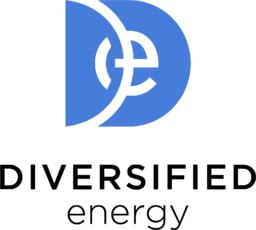
acquired

$550 Million
Exclusive Buy-Side Advisor
Summary
On November 24, 2025, Diversified Energy Company (Diversified or the Company) closed its acquisition of Canvas Energy Inc. (Canvas) for total consideration of approximately $550 million. Diversified acquired Canvas through a corporate transaction with ~3.7 million shares issued to the seller, on-hand liquidity, and proceeds from a new ABS offering. This transaction expands Diversified's presence in Major, Kingfisher and Canadian Counties, and results in combined pro forma production of ~1.3 Bcfe/d.
KeyBanc Capital Markets served as Exclusive Buy-Side Advisor to Diversified.
Diversified (NYSE & LSE: DEC) is a leading independent energy company focused on natural gas and liquids production, transportation, marketing and well retirement, primarily located within the Appalachian and Central regions of the United States. The Appalachian Basin spans Pennsylvania, Virginia, West Virginia, Kentucky, Tennessee, and Ohio and consists of multiple productive, shallow conventional formations and two productive, deeper unconventional shale formations, the Marcellus Shale and the slightly deeper Utica Shale. Diversified also operates in the Bossier and Haynesville shale formations and the Cotton Valley sandstones in East Texas and West Louisiana, the Barnett Shale in North Texas and the Mid-Continent producing areas across Central Texas, along with the Anadarko Basin across North Texas and Oklahoma and Permian Basin in West Texas and New Mexico.
Canvas is a private E&P, backed by Amzak Capital Management (Amzak), Avenue Capital Group (Avenue), and Millstreet Capital Management (Millstreet). Canvas engages in the exploration and production of oil and gas, primarily in the Anadarko Basin.
Headquartered in Boca Raton, Florida, Amzak is a diversified investment manager focused on private equity, real estate, fixed income, and industrial businesses. Headquartered in New York, New York, Avenue is a global investment firm focused on specialty lending, opportunistic credit, and other special situations investments across the United States, Europe and Asia. Headquartered in Boston, Massachusetts, Millstreet is a SEC-registered investment adviser pursuing return streams uncorrelated with traditional asset classes.

a portfolio company of

acquired by

a portfolio company of

Exclusive Sell-Side Advisor
Summary
On November 21, 2025, KeyBanc Capital Markets (KBCM) successfully advised SeaWestern Holdings, Inc. (SeaWestern or the Company), a portfolio company of Traction Capital Partners (Traction), on its sale to Municipal Emergency Services, LLC (MES), a portfolio company of Platte River Equity L.P. (Platte River). KBCM was selected to serve as SeaWestern’s Exclusive Sell-Side Advisor based on its industry-leading Specialty Distribution investment banking practice, experience in the fire and safety distribution industry, longstanding relationship with the Company and proven M&A execution capabilities.
Founded in 1977 and headquartered in Kirkland, Washington, SeaWestern is a leading distributor of critical fire and life safety solutions in the Western United States. SeaWestern provides best-in-class turnout gear, self-contained breathing apparatuses (SCBAs), compressors, personal protective equipment and emergency vehicle apparatuses. The Company’s footprint spans across 11 states, serving over 2,000 fire stations with distribution rights granted by industry-leading OEM partnerships.
Headquartered in Tacoma, Washington, Traction is a lower middle-market independent sponsor investing in businesses headquartered in the Western United States. The firm focuses on long-term investments while preserving the legacy of the prior owner's business.
Headquartered in Miami, Florida, MES is a leading equipment supplier and service provider to first responders throughout North America. MES’s workforce includes over 300 sales reps and service technicians, covering the United States and Canada from 41 locations.
Headquartered in Denver, Colorado, Platte River Equity is a leading middle-market private equity firm with over $1.7 billion of assets under management. The firm focuses on investing in middle market companies in the United States that possess scalable business models with protected market positions and strong customer relationships.

$1.7 Billion
Senior Secured Credit Facility
Joint Lead Arranger
Joint Bookrunner
Co-Documentation Agent
Summary
On November 12, 2025, KeyBanc Capital Markets served as Joint Lead Arranger, Joint Bookrunner and Co-Documentation Agent on a $1.7 billion Senior Secured Credit Facility for Harvest Midstream I, L.P., consisting of a $1.1 billion Senior Secured Revolving Credit Facility and a $600 million Term Loan A. Proceeds will be used to fund the acquisition of Green River Basin assets and Uinta Basin assets from MPLX LP and for general corporate purposes.

affiliated with

Sell-Side Advisor
Summary
Cain Brothers, a division of KeyBanc Capital Markets, served as exclusive financial advisor to Retina-Vitreous Associates Medical Group (“LA Retina”) on its strategic affiliation with Retina Consultants of America (“RCA”), a leading management services organization of retina specialists. Financial terms were not disclosed.
Cain Brothers was engaged to serve as LA Retina’s exclusive financial advisor due to its extensive history of advising physician practices, expertise in ophthalmology and retina, and deep relationships with the relevant buyers. Cain Brothers conducted a competitive marketing process to identify the right partner for LA Retina. This transaction continues Cain Brothers’ strong record in the multi-site physician services sector and is the eighth retina specialty practice Cain Brothers has represented since 2020.
Founded in 1977, LA Retina provides comprehensive medical and surgical care for retinal, macular, and vitreous conditions across Southern California. The practice also offers advanced diagnostic imaging, intravitreal injections, laser treatments, and access to clinical research trials for patients with complex eye diseases. LA Retina’s 11 board-certified and fellowship-trained ophthalmologists take an individualized approach to care that enables patients to receive personalized treatment plans focused on preserving and restoring vision.
RCA is a network of leading retina specialists with the mission of saving sight and improving patient lives through innovation and the highest quality care. Through RCA’s physician-centered practice management model, physicians continue to drive clinical care and practice culture, while benefitting from the business expertise, resources, and shared best practices available through RCA. Physicians across the RCA network conduct more than 2 million visits annually, delivering high-quality care to patients in 23 states. For more information about RCA and its network of practices, please visit www.retinaconsultantsofamerica.com.

agreed to acquire
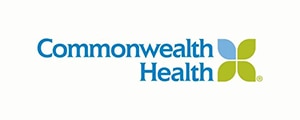
a subsidiary of

Buy-Side Advisor
Summary
Cain Brothers, a division of KeyBanc Capital Markets, served as exclusive financial advisor to Tenor Health Foundation in its pending acquisition of three hospitals from affiliates of Community Health Systems, Inc. (NYSE: CYH). Cain Brothers was also engaged to arrange debt financing associated with the transaction.
Tenor Health entered into a definitive agreement to acquire 186-bed Regional Hospital of Scranton and 122-bed Moses Taylor Hospital in Scranton, Pennsylvania and 369-bed Wilkes-Barre General Hospital in Wilkes-Barre, Pennsylvania from Commonwealth Health, a subsidiary of Community Health Systems. Rosemawr Management is providing the acquisition financing.
The transaction is subject to customary regulatory approvals and closing conditions and is expected to close in the fourth quarter of 2025. Terms are not being disclosed.
With a mission rooted in advancing equitable and innovative care, Tenor Health Foundation was formed to identify, own, manage, and turn around financially challenged hospitals. They are committed to the needs of a community, providing compassionate care, and delivery quality patient outcomes.
Community Health Systems owns or leases 70 affiliated hospitals in 14 states, with more than 10,000 beds, and operates more than 1,000 sites of care, including physician practices, urgent care centers, freestanding emergency departments, occupational medicine clinics, imaging centers, cancer centers and ambulatory surgery centers. CHS reported consolidated revenues of $12.6 billion for the last 12 months ending 9/30/2025.
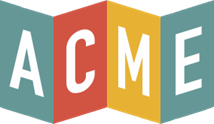
acquired by
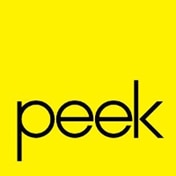
Exclusive Sell-Side Advisor
Summary
On October 28, 2025, KeyBanc Capital Markets (KBCM) successfully advised ACME Technologies, Inc. (ACME or the Company), on its sale to Peek Travel, Inc. (Peek). KBCM was engaged as the Exclusive Sell-Side Advisor due to its industry-leading sector expertise in ticketing and track record with vertical software and payments business models.
ACME empowers non-profit institutions with its best-in-class visitor experience software via a cloud-based enterprise-grade platform, enabling seamless ticketing and embedded payments offerings for guests. The Company has over a decade of experience providing a breadth of offerings ranging from online ticketing, membership, donation, and payment solutions for the largest Arts and Culture institutions in the US and Canada. ACME has sold 220+ million tickets and memberships, and served 60M+ visitors since its founding in 2014.
Peek is the operating system powering the experiences industry—from museums and attractions to tours and activities. With over $7B in bookings, Peek’s AI-powered platform has helped thousands of merchants to increase revenues, save time and deliver seamless guest experiences. Customers include MoMA, Whitney Museum, Seattle Aquarium, Bryant Park, Looping Group, and Museum of Ice Cream. The company has raised over $150 million from institutional investors including Springcoast Partners, WestCap and Goldman Sachs Alternatives.
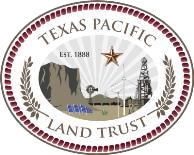
$500 Million
Senior Unsecured Credit Facility
Co-Documentation Agent
Summary
On October 23, 2025, KeyBanc Capital Markets served as Co-Documentation Agent on a $500 million Senior Unsecured Revolving Credit Facility for Texas Pacific Land Corporation. Proceeds will be used for general corporate purposes.

$75 Million
Senior Secured Credit Facilities
Coordinating Lead Arranger
Depositary Agent
Collateral Agent
Administrative Agent
Summary
On October 14, 2025, KeyBanc Capital Markets Inc. (KBCM) closed $75 million in Senior Secured Credit Facilities for Lightshift Energy’s battery energy storage systems (BESS) portfolio of six operating and 10 construction-ready projects. This financing, which includes a term loan, construction-to-term loan, and tax equity bridge loan, will help strengthen and accelerate Lightshift’s rapidly growing pipeline of energy storage projects across the East Coast.
The portfolio includes 16 battery energy storage projects, totaling 88 MW and 384 MWh in capacity, with installations located in Massachusetts (27 MW), Vermont (19 MW), and Virginia (42 MW). These construction-ready projects are expected to reach commercial operation during the second half of 2026. Revenue will be generated through energy storage service agreements with public power utilities and an industrial client.
This marks the second transaction in 2025 with Lightshift Energy. Earlier in June, KeyBanc Capital Markets served as exclusive financial advisor for Lightshift’s development capital raise from Aiga Capital Partners.
About Lightshift Energy
Lightshift is a utility-scale energy storage project developer, owner and operator headquartered in Arlington, Virginia. Founded in 2019, Lightshift is developing a diverse, multi-gigawatt pipeline of energy storage projects, located throughout the U.S. With leading energy storage analytics, application design, finance, and development expertise, Lightshift deploys dynamic, multi-use energy storage projects that maximize value for utilities and other partners, while reinvesting directly into the communities where their projects are located.
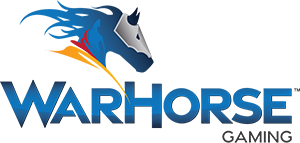
$300 Million
Senior Secured Credit Facilities
Joint Lead Arranger
Joint Bookrunner
Syndication Agent
Summary
On October 3, 2025, KeyBanc Capital Markets Inc. (KBCM) successfully closed the syndication of $300 million Senior Secured Credit Facilities for WarHorse Gaming, LLC, wholly owned by the Winnebago Tribe of Nebraska’s award-winning economic development corporation, Ho-Chunk, Inc. The financing included a $250 million Term Loan A and a $50 million Revolving Credit Facility. Proceeds will be used to refinance existing indebtedness, fund working capital and capital expenditures, and general corporate purposes.
KBCM was selected to serve as Joint Lead Arranger on the transaction due to our successful track record of executing syndicated transactions and industry expertise in the debt capital markets.
About WarHorse Gaming, LLC
The Tribe established WarHorse in 2022 to develop, own, and operate two commercial casinos in eastern Nebraska: WarHorse Gaming Lincoln, LLC and WarHorse Gaming Omaha, LLC. WarHorse completed its multi-phase development in April 2025 and currently features an aggregate of 1,900 slot machines, 28 table games, several F&B options, and other premium amenities.
About Ho-Chunk, Inc.
Ho-Chunk, Inc. (“Ho-Chunk”) was established in 1994 as an independent commercial entity owned by the Tribe. Ho-Chunk owns and operates a diversified portfolio of businesses spanning multiple end markets including gaming & real estate, manufacturing & distribution, consumer, and government contracting. As a long-term capital provider, Ho-Chunk prioritizes their dual mission of generating revenue and affecting positive social and economic impact.
About Winnebago Tribe of Nebraska
Winnebago Tribe of Nebraska is a federally recognized sovereign nation comprised of over 5,000 enrolled members. Tribal lands encompass over 27,600 acres across eastern Nebraska.

acquired

Exclusive Buy-Side Advisor
Summary
On October 3, 2025, KeyBanc Capital Markets (KBCM) successfully advised Avance Investment Management, LLC (Avance or the Company) on its acquisition of Barchemy, LLC (Barchemy), a developer and manufacturer of chocolate and confectionery ingredients. KBCM was engaged to serve as the Exclusive Buy-Side Advisor to Avance based on our long-standing relationship with the Company and Barchemy, deep Food & Beverage domain expertise and relevant M&A execution experience.
Avance is a private equity firm with offices in New York and Miami, focused on building middle market businesses in partnership with talented founders and management teams. Avance makes thematic investments within the Consumer, Services and Technology sectors in the U.S., seeking attractive opportunities with catalysts for growth within fragmented spaces with consolidation opportunities. The Company has a long history of partnering with founder-owned businesses, industry executives and management teams to add value.
Founded in 2005, Barchemy is an innovative manufacturer of high-quality, better-for-you chocolate and confectionary ingredients for the nutritional bar, bakery, confectionary and ice cream industries. Barchemy specializes in custom-formulated solutions across several applications and formats, offering an assortment of ~300 coatings, filings and inclusions. Barchemy is headquartered near Pittsburgh, Pennsylvania where it operates ~110K sq. ft. of manufacturing space across three facilities.

to sell

to
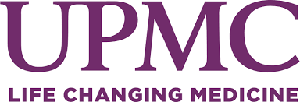
Sell-Side Advisor
Summary
Cain Brothers, a division of KeyBanc Capital Markets, is serving as the exclusive advisor to CommonSpirit Health in its sale of Trinity Health System. CommonSpirit and University of Pittsburgh Medical Center have publicly announced the signing of a non-binding letter of intent to integrate Trinity into the UPMC system.
Cain Brothers was engaged based on our expertise in the hospital and health system sector and strong understanding of the local market. Cain Brothers engaged with parties interested in continuing Trinity’s mission, leading to a letter of intent with UPMC. Over the next several months, both parties will work towards a definitive agreement, pending customary regulatory review and approvals.
CommonSpirit Health is one of the nation’s largest nonprofit Catholic health systems, delivering over 20 million patient encounters annually across 138 hospital-based locations and 2,300 care sites. Serving 24 states, CommonSpirit Health employs 160,000 team members, including 45,000 nurses and 25,000 physicians.
Trinity Health System, based in Steubenville, Ohio, is a member of CommonSpirit. With a full network of hospitals, physician practices, and specialty services across the Ohio Valley, Trinity Health System is committed to improving community health with excellence and faith-driven service.
UPMC is a leading nonprofit health care provider and insurer headquartered in Pittsburgh. With 100,000 employees and 5,000 physicians, UPMC operates 40 hospitals and 800 outpatient sites across Pennsylvania, New York, Maryland, and overseas. UPMC’s insurance services cover more than 4 million members. UPMC invests nearly $2 billion annually in community benefits, the most of any health system in Pennsylvania.

The Heights
$71.2 Million
Construction Loan, LIHTC Equity, Permanent Loan & Public Sale of Bonds
Summary
KeyBank Community Development Lending & Investment provided $71.2 million in capital for new construction of The Heights, a 160-unit affordable housing project in Akron, Ohio. All 160 units will serve families and individuals earning no more than 40%-70% of Area Median Income (AMI). The property will feature amenities for residents that will include a clubhouse and picnic area, fitness center, and a playground. We want to thank DFP Development LLC and Industrial Realty Group LLC for their sponsorship and shared mission to build much-needed affordable housing in Ohio.
The financing includes a $30.1 million construction loan, $26.2 million in LIHTC equity, $15.4 million permanent loan arranged by Key Commercial Mortgage Group, and $25 million public sale of tax-exempt private activity bonds arranged by KeyBank Capital Markets.
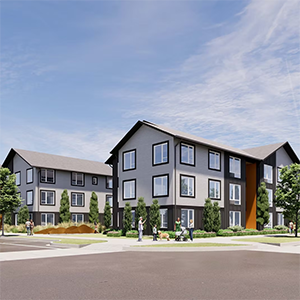
Brynhill Apartments
$5.8 Million
Construction Loan & Permanent Loan
Summary
KeyBank Community Development Lending & Investment provided $5.8 million in capital for the new construction of Brynhill Apartments, a 59-unit affordable housing project in North Plains, Oregon. All 59 units will serve families and individuals earning no more than 30%-60% of Area Median Income (AMI). Supportive services will be offered to residents by Centro Cultural, a community-based and culturally specific organization serving the Latinx community in Washington Counties. CC provides multigenerational and culturally specific services through the following core program areas: K-12 STEAM education, workforce development, small business technical assistance, public engagement, civic advocacy, community health and wellness, transitional housing, and community-wide arts and cultural events. We want to thank Home First Development Green Light Investments for their sponsorship and shared mission to build much-needed affordable housing in Oregon.
The financing includes a $3.3 million construction loan and a $2.5 million permanent loan.

Artem on Gay
$12.8 Million
Construction Loan & Permanent Loan
Summary
KeyBank Community Development Lending & Investment provided $12.8 million in capital for the new construction of Artem on Gay, a 71-unit affordable housing project in Columbus, Ohio. All 71 units will serve families and individuals earning no more than 30%-80% of Area Median Income (AMI). The property will feature amenities for residents including a community room and a fitness center. We want to thank the Ohio Community Development Finance Fund for their sponsorship and shared mission to build much-needed affordable housing in Ohio.
The financing includes a $8.3 million construction loan and a $4.5 million permanent loan.

Vita Lifestyle of Lafayette
$66 Million
Construction Loan, Permanent Loan, & Bond Underwriting
Summary
KeyBank Community Development Lending & Investment provided $66 million in capital for the new construction of Vita Lifestyle of Lafayette, a 198-unit senior affordable housing project in Lafayette, Indiana. This project will serve senior citizens earning no more than 40%–60% of Area Median Income (AMI). The property will feature amenities for residents that include a community room, pet wash, sports courts, and community patio. We want to thank Vita Investment Holdings LLC for their sponsorship and shared mission to build much-needed affordable housing in Indiana.
The financing includes $37.2 million in construction loans, a $28.8 million permanent loan arranged by Key Commercial Mortgage Group, and bond underwriting arranged by KeyBank Capital Markets.
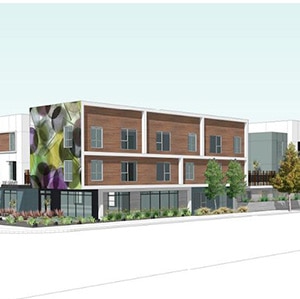
1434 W. Compton Blvd
$25.9 Million
Construction Loan
Summary
KeyBank Community Development Lending and Investment (CDLI) provided a $25.9 million loan to finance the new construction of 1434 W. Compton Blvd LP, a 75-unit affordable housing project located in Compton, California. The Coalition for Responsible Community Development (CRCD) has partnered with LandSpire Group, LLC, to develop the project. This is the inaugural development project between the sponsor, CRCD, and LandSpire Group, LLC, a partnership that aims to produce 1,000+ permanent supportive and affordable housing units across the Greater Los Angeles area over the next decade.
The project will be a three-story development consisting of studio, one-bedroom and two-bedroom units, all of which are restricted at or below 50% of the area median income (AMI). Fifty percent of the units are set aside as permanent supportive housing, and the remaining 50% as general affordable housing. Additional LIHTC equity and Freddie Mac TEL permanent financing were secured from Walker & Dunlop.
Founded in 2005, the Coalition for Responsible Community Development (CRCD) is a 501(c) 3 organization dedicated to improving the quality of life in South Los Angeles. CRCD supports low-income residents and small businesses with jobs, education, training, affordable housing, and comprehensive support. Since its inception, CRCD has facilitated $160 million in investments, creating 464 housing units and additional development worth $665 million.
Founded in 2019, LandSpire Group is a Southern California-based real estate private equity firm specializing in investing in ground-up developments in select U.S. markets that are experiencing housing affordability challenges and supply imbalances. LandSpire's housing portfolio currently consists of 500 units of market rate and workforce housing, with an additional 400 units of affordable and workforce housing scheduled for delivery by the end of 2025.
1434 W. Compton Blvd LP, which is expected to be completed by May 2027, will have onsite amenities including laundry facilities, a community room, a tot lot, a landscaped courtyard, an amphitheater-style seating area, a basketball/multi-court play area, onsite parking and a resident manager. Social services will also be provided on-site by CRCD and other community partners.
Matthew Haas and Cathy Danigelis of KeyBank CDLI structured the financing.

$286.35 Million
Follow-On Offering
Co-Manager
Summary
On September 30, 2025, KeyBanc Capital Markets acted as Co-Manager on a $286.35 million Follow-On Offering for AAR Corp. (AAR or the Company).
AAR is a leading independent provider of solutions to the global aviation aftermarket. The Company offers a broad line of products and services to commercial and defense aerospace customers. AAR operates globally in over 20 countries through four business segments: Parts Supply, Repair & Engineering, Integrated Solutions and Expeditionary Services. For the year ended May 31, 2025, the Company generated sales of $2.8 billion. For the quarter ended August 31, 2025, the Company generated sales of $739.6 million. AAR was founded in 1951, is based in Wood Dale, Illinois and as of May 31, 2025 employed approximately 5,600 employees worldwide.
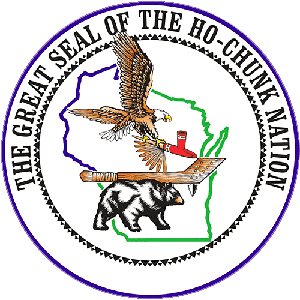

$610 Million
Senior Secured Credit Facilities
Left Lead Arranger
Joint Bookrunner
Administrative Agent
Summary
On September 26, 2025, KeyBanc Capital Markets Inc. (KBCM) successfully closed a new financing transaction for Ho-Chunk Nation of Wisconsin (HCN). The $610 million Senior Secured Credit Facilities (the Credit Facilities) consist of a $305 million Revolving Credit Facility and a $305 million Delayed Draw Term Loan. In combination with ~$95 million of equity, proceeds of the Credit Facilities will be used to finance the construction of the Nation’s new flagship casino resort in Beloit, Wisconsin, and pay fees and expenses. KBCM acted as Left Lead Arranger, Joint Bookrunner and Administrative Agent on the transaction.
HCN is a new Left Lead Agency for KBCM. KBCM was selected to arrange the financing due to our unmatched experience and expertise in the Native American Financial Services industry, robust Debt Capital Markets platform, and historical track record of success leading and syndicating transactions in the gaming space.
About Ho-Chunk Nation of Wisconsin
Ho-Chunk Nation is a federally recognized sovereign Tribal nation with ~7,766 enrolled members. Headquartered in Black River Falls, Wisconsin, the Nation’s trust lands are mainly non-contiguous and scattered across 14 counties throughout Wisconsin and surrounding states. The Ho-Chunk Nation Legislature skillfully negotiated and authorized the credit facility. The Nation’s Department of Business is responsible for the management and administration of its business enterprises, including Ho-Chunk Gaming Wisconsin.
About Ho-Chunk Gaming Wisconsin
The Nation currently owns and operates six gaming facilities under the Ho-Chunk Gaming Wisconsin brand, with locations in Black River Falls, Wisconsin Dells, Madison, Wittenberg, Tomah, and Nekoosa. Ho-Chunk Gaming Wisconsin is developing a new ~$705 million destination-style casino resort in Beloit, Wisconsin. The property will feature over 1,500 slot machines and 40 table games, a 312-room hotel with a rooftop lounge, numerous food and beverage outlets, a 2,000-seat convention center, and a parking garage. Construction started in October 2024 with the Casino opening in September 2026. The Hotel and Convention Center is expected to be completed in September 2027.

$300 Million
Senior Secured Revolving Credit Facility
Joint Lead Arranger
Co-Syndication Agent
Summary
In September 2025, KeyBank successfully upsized and closed a $300 million Senior Secured Revolving Credit Facility for Pursuit Attractions and Hospitality, Inc. (“Pursuit” or the “Company”). KeyBanc Capital Markets acted as Joint Lead Arranger and Co-Syndication Agent.
Pursuit Attractions and Hospitality, Inc. is an attractions and hospitality company. The Company offers a diverse portfolio including world-class attractions, distinctive lodges, sightseeing tours, wildlife safaris in national parks, and immersive FlyOver flight ride experiences in the United States, Canada, Iceland, and Costa Rica. The Company's customers include individuals and groups seeking immersive and unforgettable experiences in iconic destinations.

$400 Million
Senior Notes
Joint Bookrunner
Summary
On September 24, 2025, KeyBanc Capital Markets served as Joint Bookrunner on a $400 million Senior Notes offering for California Resources Corporation. Proceeds will be used to repay existing indebtedness in association with the acquisition of Berry Corporation and for general corporate purposes.

$500 Million
Senior Notes
Joint Bookrunner
Summary
On September 24, 2025, KeyBanc Capital Markets served as Joint Bookrunner on a $500 million Senior Notes offering for BKV Corporation. Proceeds will be used to fund the acquisition of Barnett Shale assets from Bedrock Production, LLC and for general corporate purposes.


$440 Million
Senior Secured Credit Facility
Left Lead Arranger
Joint Bookrunner
Administrative Agent
Summary
On September 22, 2025, KeyBanc Capital Markets Inc. (KBCM) successfully closed the syndication of a $440 million Senior Secured Revolving Credit Facility (the Revolver) for Turning Stone Resort Casino, LLC, a governmental instrumentality of the Oneida Indian Nation. Proceeds of the Revolver will be used to refinance existing indebtedness and fund a major expansion at Turning Stone Resort Casino. KBCM acted as Left Lead Arranger, Joint Bookrunner and Administrative Agent on the transaction.
KBCM’s long-standing relationship with the Nation dates back to the early '90s when the Turning Stone Resort Casino operated a small slot parlor in Central New York. Over the last 30+ years, KBCM has supported Turning Stone Resort Casino’s growth initiatives, helping it become a world-class gaming and resort destination with multiple satellite facilities. This financing marks the fifth syndication completed for Turning Stone Resort Casino since 2016.
About Oneida Indian Nation
The Oneida Indian Nation is a federally recognized sovereign Indian nation with ~1,000 enrolled members. The Nation’s lands are located within a ~300,000-acre reservation across Madison and Oneida Counties in New York and the Nation operates several enterprises across gaming, hospitality, dining, recreation, retail, and other sectors through its component unit, Turning Stone Enterprises, LLC.
About Turning Stone Resort Casino, LLC
Turning Stone Resort Casino, LLC operates Oneida’s flagship property, Turning Stone Resort Casino – Central New York’s premier gaming and resort destination featuring a 120,000 sq. ft. gaming floor with 1,652 slot machines and 73 table games and world-class amenities including five hotels, two spas, five golf courses, more than 20 dining areas, a showroom, a 5,000-seat arena and several nightlight venues. TSRC also operates gaming activities and related amenities at Point Place Casino, YBR Casino & Sports Book, The Lake House at Sylvan Beach and at six PlayOn locations.

$300 Million
Initial Public Offering
Joint Bookrunner
Summary
On September 18, 2025, KeyBanc Capital Markets served as Joint Bookrunner on Pattern Group Inc.’s (Pattern or the Company) $300 million Initial Public Offering of 21,428,572 shares, excluding overallotment.
Pattern accelerates brands on global e-commerce marketplaces leveraging proprietary technology and AI. Utilizing more than 46 trillion data points, sophisticated machine learning and AI models, Pattern optimizes and automates all levers of e-commerce growth for global brands, including advertising, content management, logistics and fulfillment, pricing, forecasting and customer service. Hundreds of global brands depend on the Company’s e-commerce acceleration platform every day to drive profitable revenue growth across 60+ global marketplaces — including Amazon, Walmart.com, Target.com, eBay, Tmall, TikTok Shop, JD, and Mercado Libre.

$1.04 Billion
Initial Public Offering
Joint Bookrunner
Summary
On September 17, 2025, KeyBanc Capital Markets served as Joint Bookrunner on Netskope, Inc.’s (Netskope or the Company) $1.04 billion Initial Public Offering of 54,970,000 shares, including overallotment.
Netskope, a leader in modern security and networking for the cloud and AI era, addresses the needs of both security and networking teams by providing optimized access and real-time, context-based security for people, devices, and data anywhere they go. Netskope delivers its offerings through a Software-as-a-Service business model, selling subscriptions that provide customers access to its platform along with related support services. The Company is a developer of a cloud security platform designed to provide visibility and real-time data and threat protection while accessing websites and private applications.

$46.25 Million
Health System Revenue Bonds, Series 2025 (Taxable)
Sole Initial Purchaser
Summary
On September 17, 2025, KeyBanc Capital Markets Inc. (KBCM) closed on the Health System Revenue Bonds, Series 2025 (the 2025 Taxable Bonds) for the San Carlos Apache Healthcare Corporation, Inc. (the Corporation).
Proceeds of the 2025 Taxable Bonds will be used, along with Corporation equity, to finance a 100-bed long-term care and skilled nursing facility (the Project) on the San Carlos Apache Tribe’s reservation, located ~130 miles east of Phoenix, Arizona. The Project will be adjacent to the Corporation’s 12-bed critical access hospital, enabling members of the San Carlos Apache Tribe (the Tribe) to receive culturally sensitive care and remain close to loved ones.
KBCM assisted the Corporation in securing an ‘A-’ credit rating from Fitch Ratings, supporting the marketing of the 2025 Taxable Bonds. This credit rating is believed to be the first ever for a tribal healthcare operator in the lower 48 states, and one of the highest ever credit ratings for a Native American tribe or tribally chartered corporation. This financing arrangement is distinguished by the absence of a guaranty from any other party and lack of security from sources other than the revenue and assets of the Corporation’s Health System. This structure may help pave the way for other tribes’ health systems and tribally chartered corporations to issue debt secured solely by health system revenues, facilitating future capital projects. Further, the terms of the 2025 Taxable Bonds allow the Corporation to issue additional debt without lender consent if certain financial covenants are met. After seven years, the Bonds can be called at par. Once operational, the Project is eligible to enter a Section 105(l) lease with the Indian Health Services to receive reimbursements for Project costs, including bond debt service.
About San Carlos Apache Healthcare Corporation and the San Carlos Apache Tribe
The San Carlos Apache Healthcare Corporation Inc. or Izeé Baa Gowáh, is a subsidiary economic development enterprise of the Tribe, organized as a nonprofit corporation under the San Carlos Apache Tribe Nonprofit Corporation Act. The Corporation is currently organized and operated solely and exclusively for charitable health care and research purposes, and specifically to support and assist in the provision of holistic and comprehensive hospital and clinical health care services, and for the advancement of the health and social welfare of the Tribe and its members, to assist the Tribe in achieving greater self-sufficiency and self-governance, and to stimulate employment, entrepreneurial, and economic opportunities within the reservation.
The Corporation currently operates a health care campus on approximately 170 acres in Peridot, Arizona, including a 12-medical/surgical bed critical access hospital, a dental clinic, support facilities and employee/provider housing, and a health care campus on approximately 50 acres in Bylas, Arizona, which includes a rural health center. This system provides healthcare for the Tribe, which has an enrolled population of 17,270 members.
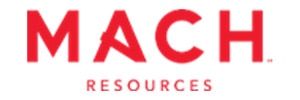
$2 Billion
Senior Secured Credit Facility
Joint Lead Arranger
Co-Syndication Agent
Summary
On September 16, 2025, KeyBanc Capital Markets served as Joint Lead Arranger and Co-Syndication Agent on a $2 billion Senior Secured Revolving Credit Facility for Mach Natural Resources LP. Proceeds will be used to fund the acquisition of San Juan Basin assets from IKAV Energy Inc and Central Basin Platform assets from Sabinal Energy, LLC.
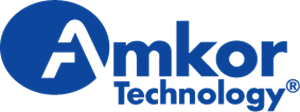
$500 Million
Senior Notes
Joint Bookrunner
Summary
In September 2025, KeyBanc Capital Markets (KBCM) acted as Joint Bookrunner on Amkor Technology, Inc.’s (Amkor or the Company) offering of $500 million Senior Notes due 2033 (the Notes). Proceeds from the Notes will be used to repay the existing 6.625% Senior Notes due 2027, for general corporate purposes, and to pay related fees and expenses.
KBCM was selected to serve as Joint Bookrunner on the offering as a result of our deep industry knowledge and High Yield Capital Markets expertise.
Amkor is the world’s largest U.S.-headquartered OSAT service provider and is a global leader in outsourced semiconductor packaging and test services. Since its founding in 1968, Amkor has pioneered the outsourcing of integrated circuit packaging and test services and is a strategic manufacturing partner for the world’s leading semiconductor companies, foundries, and electronics OEMs. Amkor provides turnkey manufacturing services for the communication, computing, automotive and industrial and consumer markets, including smartphones, data centers, artificial intelligence, electric vehicles and wearables.

$750 Million
At-the-Market Offering
Sales Agent
Summary
In September 2025, Rocket Lab Corporation filed a $750 million At-the-Market Offering with KeyBanc Capital Markets. Key acted as one of seven agents.
Rocket Lab Corporation (RKLB) is an end-to-end space company with an established track record of mission success. RKLB delivers reliable launch services, spacecraft design services, spacecraft components, spacecraft manufacturing and other spacecraft and on-orbit management solutions that make it faster, easier and more affordable to access space.

Interstate Power & Light Company
$300 Million
Senior Debentures
Active Joint Bookrunner
Summary
In September 2025, we served as Active Joint Bookrunner on Interstate Power & Light’s (IPL) issuance of $300 million Senior Debentures due October 1, 2055, with a 5.6% coupon. IPL, a wholly owned subsidiary of Alliant Energy Corporation, is a public utility serving Iowa with electricity and natural gas. It provides electric service to about 500,000 customers and 230,000 natural gas customers.
IPL intends to use the net proceeds to reduce outstanding capital under their receivables purchase and sale program, to reduce outstanding commercial paper, and/or for general corporate purposes. KeyBanc Capital Markets served as Active Joint Bookrunner.

$225 Million
Convertible Senior Notes
Joint Bookrunner
Summary
On September 10, 2025, KeyBanc Capital Markets (KBCM) successfully priced $225 million of Convertible Senior Notes due 2031 for Astronics Corporation (Astronics or the Company). Proceeds will be used to fund the repurchase of a portion of the existing 5.500% Convertible Senior Notes due 2030 and to fund a Capped Call in connection with the offering. KBCM acted as Joint Bookrunner on the transaction.
Astronics Corporation (NASDAQ: ATRO) serves the world’s aerospace, defense, and other mission critical industries with proven, innovative technology solutions. The Company works side-by-side with customers, integrating their array of power, connectivity, lighting, structures, interiors, and test technologies to solve complex challenges. For over 50 years, Astronics has delivered creative, customer-focused solutions with exceptional responsiveness. Today, global airframe manufacturers, airlines, militaries, completion centers, and Fortune 500 companies rely on the collaborative spirit and innovation of Astronics.
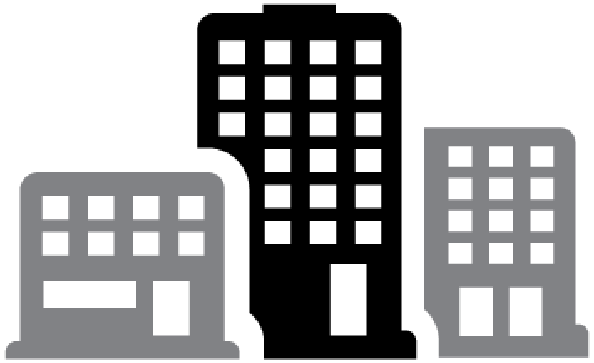
Timber Ridge
$22.4 Million
Construction Loan & LIHTC Equity
Summary
KeyBank Community Development Lending & Investment provided $22.4 million in capital for the new construction of Timber Ridge, a 52-unit senior affordable housing project in Davenport, Iowa. All 52 units will serve senior citizens earning no more than 40%-60% of Area Median Income (AMI). The property will feature amenities for residents that will include a clubhouse, fitness center, business center, playground, and a picnic area. We want to thank Woda Cooper Companies Inc for their sponsorship and shared mission to build much-needed affordable housing in Iowa.
The financing includes a $11.2 million construction loan and $11.2 million in LIHTC equity.
Our Expertise
Explore the latest information and expertise from our team of industry specialists covering solutions for capital growth, business expansion, and financial strategies.
Banking products and services are offered by KeyBank National Association. All credit products are subject to collateral and/or credit approval, terms, conditions, and availability and subject to change.
Key Wealth, Key Private Bank, Key Family Wealth, KeyBank Institutional Advisors and Key Private Client are marketing names for KeyBank National Association (KeyBank) and certain affiliates, such as Key Investment Services LLC (KIS) and KeyCorp Insurance Agency USA Inc. (KIA).






